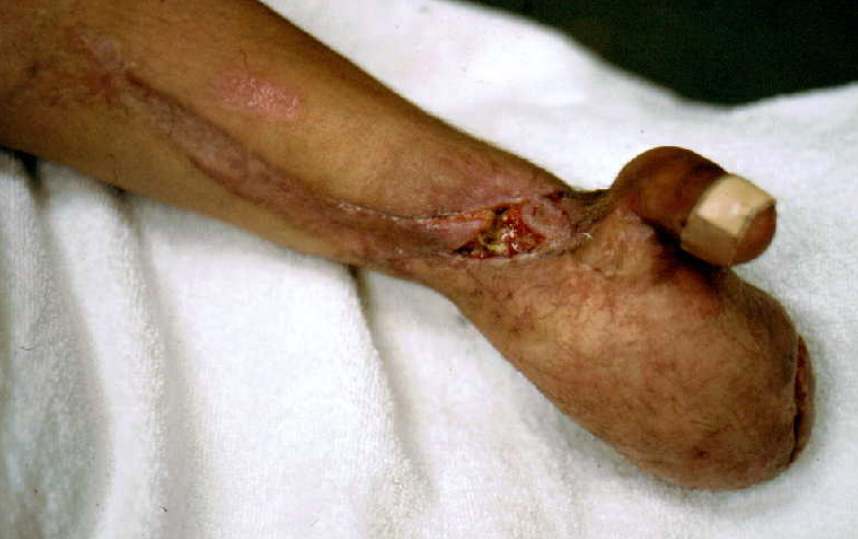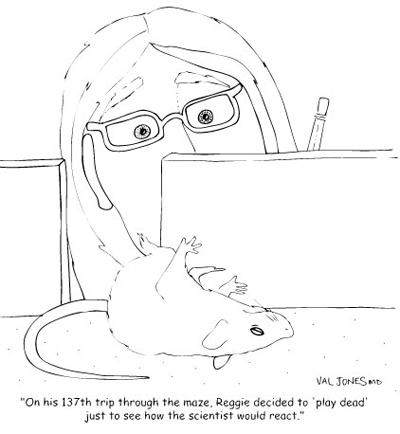May 23rd, 2009 by Jon LaPook, M.D. in Better Health Network
No Comments »
The answer is “yes.” An estimated 5.3 million Americans suffer from Alzheimer’s Disease, the majority – 5.1 million – over the age of sixty five. Research suggests that less than 35 percent of people with Alzheimer’s or other dementias are properly diagnosed. Early diagnosis is crucial for many reasons, including:
1) There are medications available today that can reduce symptoms in many people – at least temporarily – and improve the daily lives of patients. There are also trials of new drugs that researchers hope will slow or stop the underlying processes that cause Alzheimer’s in the first place.
2) Knowing what’s going on can lessen anxiety and allow for planning – not only for patients but for their families, friends, and caregivers.
3) Although Alzheimer’s causes 60-80 percent of dementia in patients over 65, there are other causes that need to be considered, especially potentially reversible ones due to medications, alcohol, low thyroid, low B12, depression, and infections. Dementia can also be caused by tumors, increased pressure, blood clots and other abnormalities within the head itself that can be detected by a CT or MRI of the brain. And patients with “vascular dementia” due to problems such as multiple small strokes (that may not have caused any other symptoms) can be treated with measures that include medications and lifestyle adjustments to lower their cardiovascular risk.
The Alzheimer’s Association is a terrific resource for information about Alzheimer’s and other forms of dementia. Its website includes ten warning signs for Alzheimer’s Disease.
May 22nd, 2009 by Nancy Brown, Ph.D. in Better Health Network
No Comments »

Many of us are conscious of the fact that not only has our culture extended adolescence to about age 22, now “adultescence” seems to be becoming the norm. This phenomenon is experienced by parents whose adult children return home after college, for whatever reason – some financial, others just not sure what else to do – creating a large number of “failure to launch” scenarios for parents who should be retiring and worrying about their own parents, without adult children to worry about, too!
Paralleling this process seems to be what my daughter, a rising senior in high school, describes as her own “I won’t grow up” crisis. She drives, she works, she makes decisions, she has friends and a boyfriend, she is excited about her summer plans, applying for college as well as going to college, and perceives her life as supported, magical and pretty darn perfect. So, why on earth should she look forward to being a grown-up?
What is the motivation? What do adults in our society have that teens and young adults who go to college do not – well let me see – marriages, bills, worry, stress, chores, a full time job, a house, cars to purchase and maintain, kids, colleagues, bosses, pets, neighborhood issues – and so on.
Newsflash folks, by giving our teens the rights and privileges associated with adulthood at younger and younger ages, we have effectively removed their motivation to grow up and leave home! Parenting has become a lifelong profession as we uberly competent and supportive parents have created a generation of young adults who do not need to become responsible for their own lives, and we have made it exceedingly difficult to answer the question – why should I grow up?
Beats me, is all I can say!
This post, Teenage Personal Responsibility: What Is The Motivation To Grow Up?, was originally published on
Healthine.com by Nancy Brown, Ph.D..
May 22nd, 2009 by Medgadget in Better Health Network
No Comments »


Earlier this week we reported on an effort at North Carolina State University to develop a better patient gown, seeing how no one ever liked the conventional tie-in-back style. To be honest, we weren’t particularly excited about the aesthetics – the design looked like a copy of typical nurse’s scrubs we see every day. Turns out that the University of Cincinnati has teamed up with Hill-Rom Company, Inc., of Batesville, Indiana, to brainstorm through possible innovations to improve the gown, the results of which will be shown at the university’s June 12 fashion show.
 Here’s from the University of Cincinnati via gizmag:
Here’s from the University of Cincinnati via gizmag:
And so, the solution eventually offered by the UC students is a “Progressive Recovery Collection.” These are options for multiple gowns that can, importantly, all be created from one pattern – a practice that would cut down on waste and inefficiency.
The options are:
One gown for seriously ill bed ridden patients. Another gown for the somewhat mobile patient. A third gown for the fully ambulatory.
The most important thing for a bedridden patient is to prevent pressure ulcers, according to Brooke Brandewie, a student who graduated from the product-development track of UC’s fashion design program in June 2008 and who is now working at the Live Well Collaborative as a design research associate.
“We created a gown that will allow the mattress to be the mattress. The gown is open backed for high-risk, immobile patients so the areas on the body (most susceptible to pressure ulcers) can be healed from the mattress technology, without fabric bunching in between,” Brandewie explained.
In addition, this gown (and the others created by the students) provides easy access at the shoulder – via slits and closures in the design – so that caregivers may operate IV units or other drug-delivery tools.
The students recommend that this gown – and the related versions – be made from naturally anti-microbial materials like bamboo or crabyon (a material actually made from crab shells).
There’s nothing as comfortable as a bath robe, or your own clothes that you wear at home. And that’s the inspiration behind a gown created by the UC students for the semi-mobile patient. It mimics “comfort clothes.”
Said Brandewie, “As the patient improves in condition, they will ‘graduate’ to the next gown appropriate for their condition and mobility. It not only represents the patient’s progressive physical improvement, it provides a psychological boost as well,” said Brandewie.
Like all the UC-created gowns, it closes not via standard ties currently in use with hospital gowns but via a closure like a bathrobe belt. It’s secure, comfortable, can fit to almost any size and is also more flattering to the human figure.
The gown has a full back and a kangaroo pocket in the front, recognizing that the patient will lie in bed, sit in a chair, stand and walk. Portions of the gown are made of special material to wick away moisture and sweat.
And in recognition of the reality that patients sitting or resting will be colder than those on the move, this gown comes with accessories: A scarf with a pocket, arm warmers, leg warmers and shawl, all made of bamboo jersey to integrate both extreme softness and anti-bacterial characteristics.
More at gizmag…
Flashback: “Down With the Gown” Redesigns Drab Hospital Wear

*This blog post was originally published at Medgadget*
May 21st, 2009 by Dr. Val Jones in Health Tips, True Stories
No Comments »
There’s no technological substitute for the human hand. Manual dexterity is incredibly hard to replicate, and so surgeons will go to great lengths to save injured hands. Unfortunately, sometimes the injury is too severe to allow for any meaningful functional recovery.
In these two cases, well-meaning surgeons refused to amputate the unsalvageable hands, thus delaying recovery and adaptation of prostheses.
This is a photo of a trauma victim who underwent extensive reconstruction of the hand, including transplantation of a toe to the thumb’s position. Gangrene set in and tracked up one of the tendon sheaths.

Photo Credit: Dr. Heikki Uustal
In this case, a burn victim was hoping to have some fingers reconstructed from his fist. He declined amputation and fitting with a prosthesis, despite the potential for enhanced function.

Photo Credit: Dr. Heikki Uustal
In both cases, a wrist disarticulation (amputation at the wrist) and prosthetic fitting (such as this myo-electric device with a self-suspending socket) might have provided a better functional and cosmetic outcome:

Photo Credit: Dr. Heikki Uustal
Sometimes, it’s better to amputate.





 Here’s from the University of Cincinnati via gizmag:
Here’s from the University of Cincinnati via gizmag:











